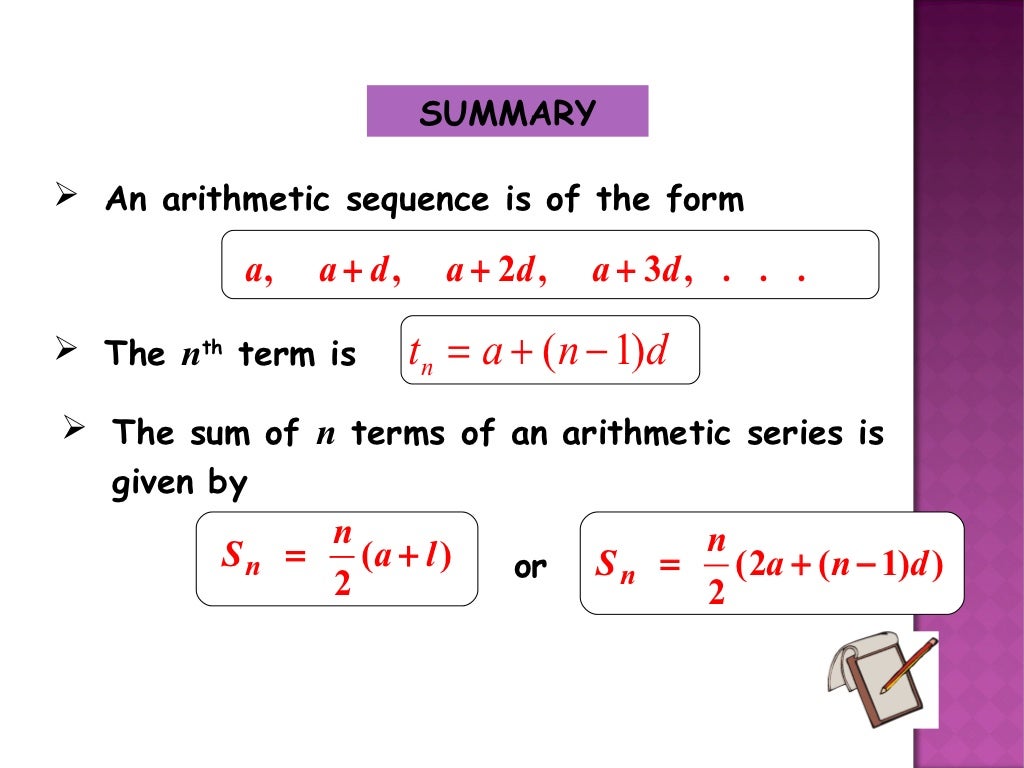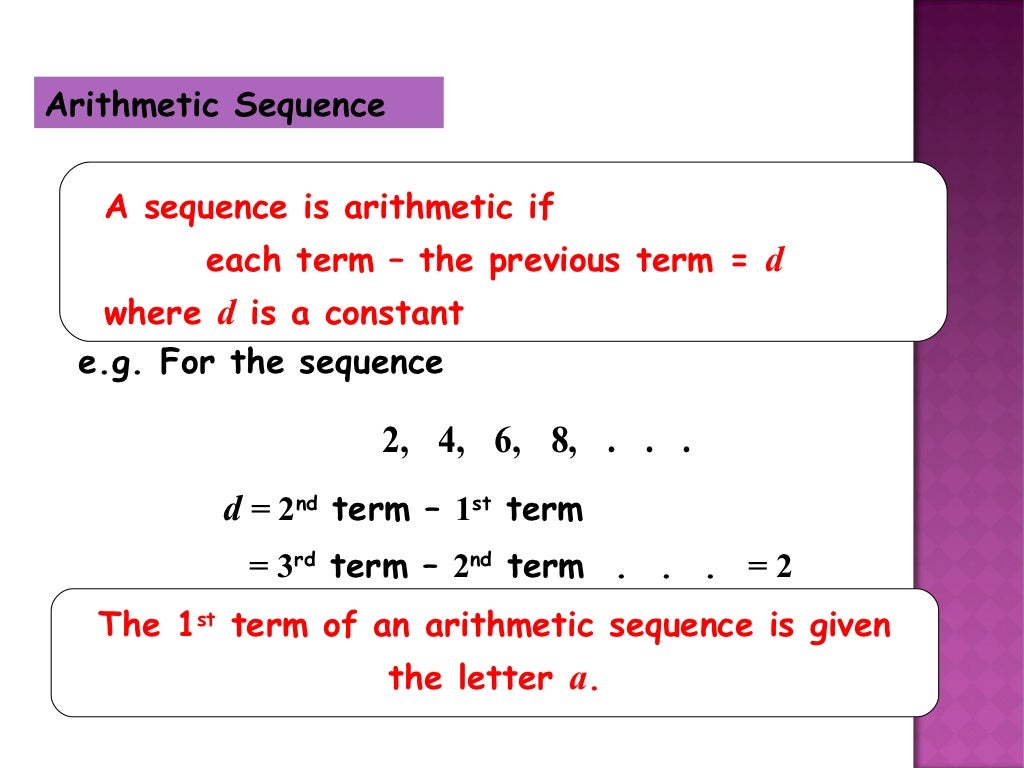

Substituting the values in the AP formula Let’s take an example of the sum of an infinite AP The sum of the n terms of an AP when the last term is known is:. Sum of n terms in AP when the last term is given. Where d is a common difference, it can be positive, negative or zero. In an AP for a series, the common difference is the difference between the two successive terms it can be obtained by using the formula Where a is the first term in an arithmetic progression. In an arithmetic progression, the term which we come across frequently are:-Īn AP can also be written in common differences for example:. The sum of the n terms in an arithmetic progression can be easily found by using a simple formula which states that if we have an arithmetic progression who’s the first term is a and the common difference between the terms is d, then the formula for the n term of AP is
Sum of sequence formula series#
For example, the series of natural numbers, which is 1,2,3,4,5…, is an arithmetic progression that has the same difference between the successive numbers. There can be infinite numbers in an arithmetic progression. doi: 10.1511/2006.59.200.Q:- Write the Formula for the Sum of Terms in AP.Īnswer:- An arithmetic progression is a series or sequence of numbers in which the difference between the successive numbers is the same. Sn (n/2)×(a + l), which means we can find the sum of an arithmetic series by multiplying. Definition Formula Harmonic Progression Sum Relation Between AP, GP and HP Examples What is Harmonic Progression A Harmonic Progression (HP) is defined as a sequence of real numbers which is determined by taking the reciprocals of the arithmetic progression that does not contain 0.

Generalized arithmetic progression, a set of integers constructed as an arithmetic progression is, but allowing several possible differences.Inequality of arithmetic and geometric means Write the sum using sigma notation: 2 + 4 + 6 + 8 + 10 + 12 + 14 + 16 + 19 + 20. The sequences and series formulas for different types are tabulated below: Arithmetic.However, the intersection of infinitely many infinite arithmetic progressions might be a single number rather than itself being an infinite progression. If each pair of progressions in a family of doubly infinite arithmetic progressions have a non-empty intersection, then there exists a number common to all of them that is, infinite arithmetic progressions form a Helly family. The intersection of any two doubly infinite arithmetic progressions is either empty or another arithmetic progression, which can be found using the Chinese remainder theorem. The formula is very similar to the standard deviation of a discrete uniform distribution. If the initial term of an arithmetic progression is a 1 is the common difference between terms. The two geometric sum formulas are: The geometric sum formula for finite terms: If r 1, S n an and if r1,S n a(1r n)/1r The geometric sum formula for infinite terms: S n a 1 r.

is an arithmetic progression with a common difference of 2. /rebates/2fhotmath2fhotmathhelp2ftopics2fsum-of-the-first-n-terms-of-a-series&. In math, the geometric sum formula refers to the formula that is used to calculate the sum of all the terms in the geometric sequence. Sum of Arithmetic Sequence Formula & Examples What is Arithmetic Sequence - Video & Lesson Transcript Math Courses / Algebra II Textbook / Algebra II: Sequences and.

The constant difference is called common difference of that arithmetic progression. An arithmetic progression or arithmetic sequence ( AP) is a sequence of numbers such that the difference from any succeeding term to its preceding term remains constant throughout the sequence.


 0 kommentar(er)
0 kommentar(er)
